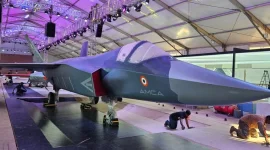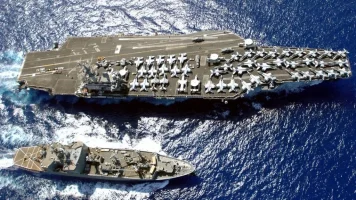- Views: 2K
- Replies: 14
India's private sector possesses the necessary technological and manufacturing capabilities to develop indigenous fighter jet engines, but overcoming challenges like the lack of adequate high-altitude testing facilities remains crucial for achieving true self-reliance in this critical defence area.
This assessment was delivered by Venkat Raju, Managing Director of VEM Technologies, at The Week Defence Conclave. His remarks highlighted both the significant progress made by the nation and the persistent hurdles in this strategically important field.
Mr. Raju emphasised that Indian industry has made substantial advancements in core areas vital for aero-engine development. He pointed to considerable expertise gained in system engineering, seamless integration of complex components, and process automation.
he industry has also matured in its understanding and application of advanced materials, supported by extensive experience in constructing sophisticated test equipment and a strong pool of skilled engineers.
Furthermore, design and analytical tools within the country have achieved high levels of efficiency, allowing for quicker and more precise simulations of engine performance, while precision manufacturing capabilities are now well-established.
This progress, according to Raju, extends to expertise in fuel system management and reliability engineering, with private companies now demonstrating full system-level capabilities.
"This means engine development can now be managed by private industry," he stated, indicating a potential shift from the traditional reliance on public sector undertakings for such complex defence projects.
He also affirmed that India has the capacity for large-scale engine manufacturing, a vital component for sustaining modern fighter aircraft programs. For decades, India has worked on developing its own jet engines, such as the Kaveri engine, which, despite challenges, provided valuable experience.
However, significant challenges persist. Mr. Raju specifically identified high-altitude testing as a critical gap where India might still require external assistance. Such testing is essential to ensure engines perform reliably under the extreme atmospheric conditions encountered at high operational altitudes.
He stressed the strategic dangers of continued dependence on foreign Original Equipment Manufacturers (OEMs) for engine development. While acknowledging that using some foreign engines is acceptable tactically, he cautioned, "no foreign OEM is likely to provide true technology transfer or genuine co-development opportunities."
This situation underscores the pressing need for India to prioritise and invest in indigenous development to secure its strategic autonomy and reduce vulnerabilities in its defence preparedness.
Providing a realistic outlook, the VEM chief cautioned that developing a fighter jet engine is a lengthy and resource-intensive process. "Testing alone will take at least five years," he estimated, adding that a fully operational indigenous engine, developed using India's current approach, could take approximately 15 years to come to fruition.
The financial investment required is also substantial, projected to be between Rs 12,000 crore and Rs 15,000 crore for the entire cycle of development and subsequent mass production.
To turn this ambitious vision into reality, Mr. Raju called for decisive action from the highest levels of policymaking. He urged for sustained government support, strategic investment, and clear alignment of national priorities to drive this critical indigenous defence program forward, ensuring India can eventually power its fighter aircraft with locally developed and manufactured engines.


